
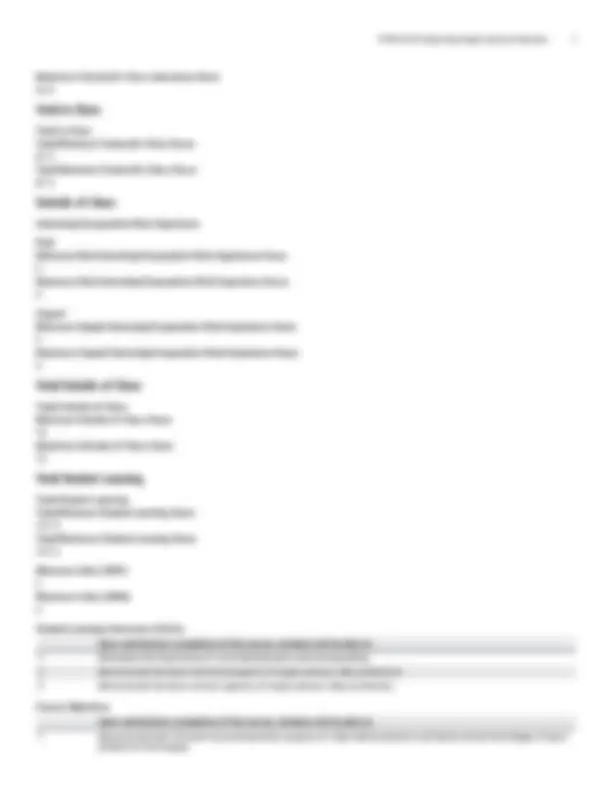
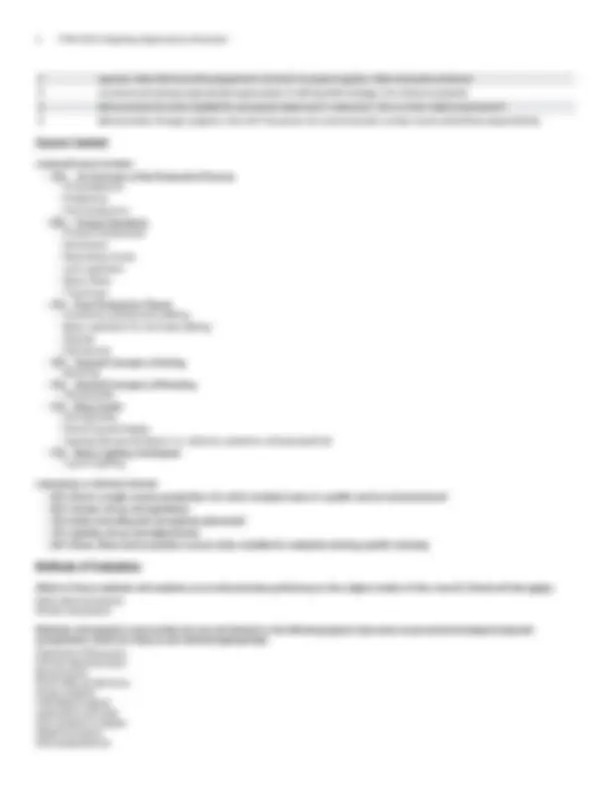
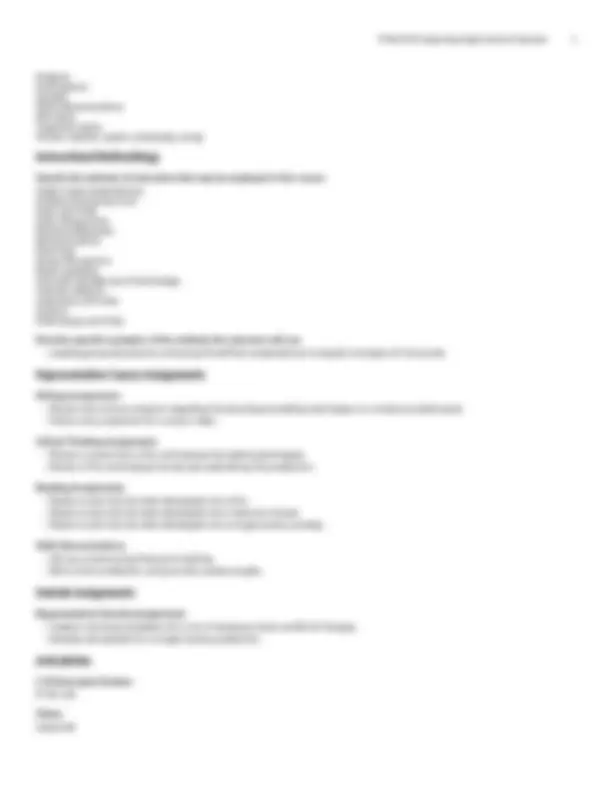
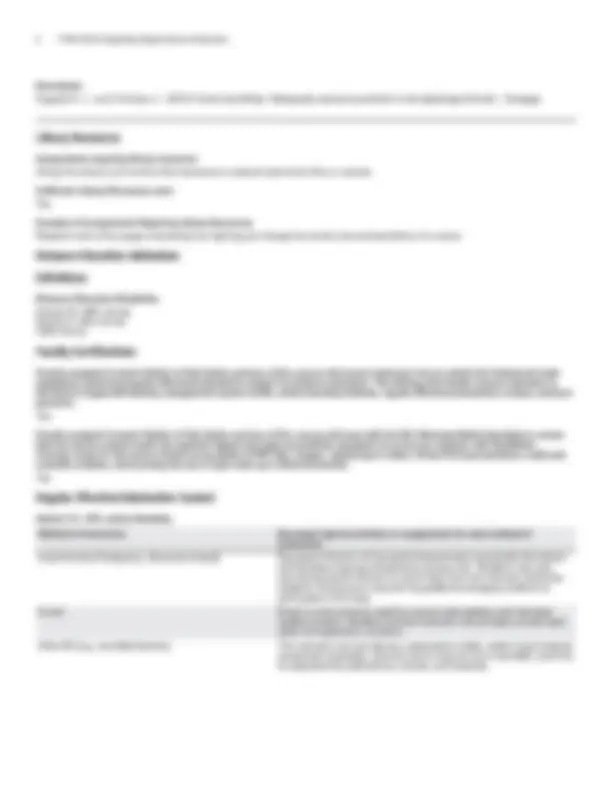
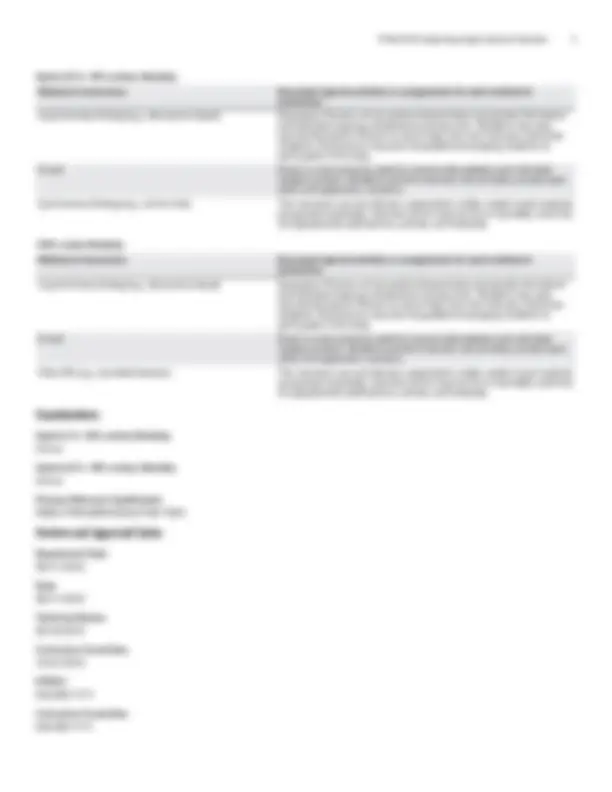



Study with the several resources on Docsity

Earn points by helping other students or get them with a premium plan


Prepare for your exams
Study with the several resources on Docsity

Earn points to download
Earn points by helping other students or get them with a premium plan
Community
Ask the community for help and clear up your study doubts
Discover the best universities in your country according to Docsity users
Free resources
Download our free guides on studying techniques, anxiety management strategies, and thesis advice from Docsity tutors
Information about FTMA M130, a single camera production course offered at Moorpark College. The course introduces students to the theory, terminology, and operation of single camera video production, including composition and editing techniques, camera operation, portable lighting, video recorder operation, audio control, and basic editing. Students will focus on the aesthetics and fundamentals of scripting, producing, directing on location, post-production, and exhibition/distribution.
What you will learn
Typology: Study notes
1 / 10

This page cannot be seen from the preview
Don't miss anything!







Originator clarson Co-Contributor(s) Name(s) Block, Nicole (nblock) Grimes, Michael (mgrimes) Snowden, Lauren (lsnowden) Petrello, Rolland (rpetrello) College Moorpark College Discipline (CB01A) FTMA - Film, Television, Media Arts Course Number (CB01B) M Course Title (CB02) Beginning Single Camera Production Banner/Short Title Beginning Single Camera Prod Credit Type Credit Start Term Fall 2020 Formerly FTVM M Catalog Course Description Introduces the theory, terminology, and operation of single camera video production, including composition and editing techniques, camera operation, portable lighting, video recorder operation, audio control and basic editing. Focuses on the aesthetics and fundamentals of scripting, producing, directing on location, post-production, and exhibition/distribution. Taxonomy of Programs (TOP) Code (CB03) 0604.00 - *Radio and Television Course Credit Status (CB04) D (Credit - Degree Applicable) Course Transfer Status (CB05) (select one only) B (Transferable to CSU only) Course Basic Skills Status (CB08) N - The Course is Not a Basic Skills Course SAM Priority Code (CB09) C - Clearly Occupational Course Cooperative Work Experience Education Status (CB10) N - Is Not Part of a Cooperative Work Experience Education Program Course Classification Status (CB11) Y - Credit Course
Educational Assistance Class Instruction (Approved Special Class) (CB13) N - The Course is Not an Approved Special Class Course Prior to Transfer Level (CB21) Y - Not Applicable Course Noncredit Category (CB22) Y - Credit Course Funding Agency Category (CB23) Y - Not Applicable (Funding Not Used) Course Program Status (CB24) 1 - Program Applicable General Education Status (CB25) Y - Not Applicable Support Course Status (CB26) N - Course is not a support course Field trips Will not be required Grading method Letter Graded Alternate grading methods Credit by exam, license etc. Student Option- Letter/Pass Pass/No Pass Grading Does this course require an instructional materials fee? No Repeatable for Credit No
Carnegie Unit Override No
Lecture Minimum Contact/In-Class Lecture Hours 35 Maximum Contact/In-Class Lecture Hours 35 Activity Minimum Contact/In-Class Activity Hours 0 Maximum Contact/In-Class Activity Hours 0 Laboratory Minimum Contact/In-Class Laboratory Hours
2 operate video field recording equipment correctly to acquire quality video and audio products. 3 conceive and execute appropriate approaches to editing field footage into cohesive projects. 4 demonstrate the skills needed for successful teamwork in television, film or other media employment. 5 demonstrate, through projects, that with the power of a communicator comes moral and ethical responsibility.
Lecture/Course Content
Which of these methods will students use to demonstrate proficiency in the subject matter of this course? (Check all that apply): Skills demonstrations Written expression Methods of Evaluation may include, but are not limited to, the following typical classroom assessment techniques/required assignments (check as many as are deemed appropriate): Classroom Discussion Clinical demonstration Essay exams Film/video productions Group projects Individual projects Laboratory activities Oral analysis/critiques Objective exams Oral presentations
Projects Participation Quizzes Skills demonstrations Skill tests Treatment plans Written creation (poem, screenplay, song)
Specify the methods of instruction that may be employed in this course Audio-visual presentations Collaborative group work Class activities Class discussions Distance Education Demonstrations Field trips Group discussions Guest speakers Instructor-guided use of technology Internet research Laboratory activities Lecture Small group activities Describe specific examples of the methods the instructor will use:
Writing Assignments
Representative Outside Assignments
C-ID Descriptor Number FTVE 130 Status Approved
Resource Type Textbook Description Schenk, S., and Long. B. (2017). The digital filmmaking handbook, (6th ed.). Foreing Films. Resource Type Textbook Classic Textbook Yes Description Medoff, N., and Fink, E. (2012). Portable video: News and field production, (6th ed.). Focal. Resource Type Textbook
Description Osgood, R. J., and Hinshaw, J. (2013). Visual storytelling: Videography and post production in the digital age, (2nd ed.). Cengage.
Assignments requiring library resources Using the Library's print and online resources to research particular films or scenes. Sufficient Library Resources exist Yes Example of Assignments Requiring Library Resources Research and write a paper evaluating how lighting can change the mood, tone and aesthetics of a scene.
Distance Education Modalities Hybrid (51–99% online) Hybrid (1–50% online) 100% Online
Faculty assigned to teach Hybrid or Fully Online sections of this course will receive training in how to satisfy the Federal and state regulations governing regular effective/substantive contact for distance education. The training will include common elements in the district-supported learning management system (LMS), online teaching methods, regular effective/substantive contact, and best practices. Yes Faculty assigned to teach Hybrid or Fully Online sections of this course will meet with the EAC Alternate Media Specialist to ensure that the course content meets the required Federal and state accessibility standards for access by students with disabilities. Common areas for discussion include accessibility of PDF files, images, captioning of videos, Power Point presentations, math and scientific notation, and ensuring the use of style mark-up in Word documents. Yes
Hybrid (1%–50% online) Modality: Method of Instruction Document typical activities or assignments for each method of instruction Asynchronous Dialog (e.g., discussion board) Discussion Forums will be used to disseminate coursewide information and facilitate ongoing collaborative course work. Students may also use the Discussion Forums to solicit help from the instructor and other students. Discussions may also be graded encouraging students to participate in the class. E-mail Email is a tool primarily used for course-wide updates and individual student contact. Students and the instructor can privately contact each other with questions, concerns. Other DE (e.g., recorded lectures) The instructor can provide text, presentation slides, audio/visual material, assignment examples, tutorials (which may be live or recorded), and links to supplemental publications, articles, and websites.
Board MM/DD/YYYY CCCCO 10/07/ Control Number CCC DOE/accreditation approval date MM/DD/YYYY